Inspection of PC Pre-Tensioned Girders Deteriorated by Actual Salt Damage via the Triaxial Magnetic Method
Abstract
1. Introduction
2. Investigation Method
2.1. Description of the Material
2.2. Magnetic Flux Leakage Method Using a Triaxial Sensor
2.2.1. Principle of Magnetic Flux Leakage Method Using Triaxial Sensor
2.2.2. Methodology for Conducting the Investigation in This Study
2.3. Visual and Hammer-Tapping Investigation of the Bottom of the Girder
2.4. Destructive Investigation of the Bottom of the Girder
3. Investigation Results
3.1. Selection of the Investigation Area
3.2. Comparison and Verification of the Results of Non-Destructive Investigation and Destructive Investigation
3.2.1. Sound Case (Seaward Side, Area 1)
3.2.2. Case of Crack Width 0.55 mm (Seaward Side, Area 2)
3.2.3. Case of Crack Width 2.0 mm (Seaward Side, Area 6)
3.2.4. Case of Crack Width 4.0 mm (Seaward Side, Area 3)
4. Conclusions
- (1)
- Using the triaxial magnetic method, it was confirmed that two-wire failure and one-wire failure in a pre-tensioned girder could be accurately detected using a thin strand of two wires.
- (2)
- Using the magnetic flux leakage method with permanent magnets, it was difficult to detect cross-sectional defects due to corrosion in the wire, because the magnetic field properties of the wire defects did not correspond with the cross-sectional defects;
- (3)
- In the magnetic flux leakage method with permanent magnets, when two wire failures occur close to each other, the magnetic fields overlap and form a magnetic field that can be regarded as a single break; so, it is considered difficult to detect each individual break;
- (4)
- When applying the magnetic flux leakage method with permanent magnets, if there is a failure in the PC steel material near the stirrup, the magnetic fields formed by the failure and the stirrup overlap, causing the magnetic field specific to the failure to move or disappear, which may cause positional error or make detection impossible.
Author Contributions
Funding
Data Availability Statement
Conflicts of Interest
References
- Virmani, Y.P.; Clemera, G.G. Corrosion Protection: Concrete Bridge (Report No. FHWA-RD-98-088); U.S. Department of Transportation, Federal Highway Administration, Turner-Fairbank Highway Research Center: McLean, VA, USA, 1998. [Google Scholar]
- JIS A 5313-1959; Prestressed Concrete Beams for Slab Bridges. Japan Industrial Standards Research Association Deliberation: Japanese Standards Association: Tokyo, Japan, 1971.
- Takeda, K.; Tanaka, Y.; Shimomura, T.; Yamaguchi, T.; Kuga, S.; Ibayashi, K.; Murakami, Y. Loading test and numerical evaluation of the residual strength of pre-tension PC beam affected by chloride attack. J. Jpn. Soc. Civ. Eng. Ser. E2 Mater. Concr. Struct. 2015, 71, 303–322. [Google Scholar]
- Singh, S.W.; Rao, B.P.C.; Thirunavukkarasu, S.; Jayakumar, T. Flexible GMR sensor Array for Magnetic Flux leakage Testing of Steel Track Ropes. J. Sens. 2012, 2012, 129074. [Google Scholar]
- Wu, J.; Wu, W.; Kang, Y. Magnetic Flux Leakage Course of Inner Defects and Its Detectable Depth. Chin. J. Mech. Eng. 2021, 34, 63. [Google Scholar] [CrossRef]
- Jones, L.; Pessiki, S.; Naito, C.; Hodgson, I. Inspection Methods & Techniques to Determine Non-Visible Corrosion of Prestressing Strands in Concrete Bridge Components: Task 2—Assessment of Candidate NDT Methods (ATLSS REPORT NO.09-09); Lehigh University, ATLSS Engineering Research Center, Pennsylvania. Dept. of Transportation: Bethlehem, PA, USA, 2010. [Google Scholar]
- Nims, D.K.; Devabhaktuni, V. Magnetic Sensor for Nondestructive Evaluation of Deteriorated Prestressing Strand—Phase II: (Final Report); The University of Toledo, University Transportation Center: Toledo, OH, USA, 2011. [Google Scholar]
- Myakushev, K.; Slearev, D.; Sukhorukov, D. Magnetic flux leakage (MFL) method for nondestructive testing of pre-stressed steel reinforcement strands. In Proceedings of the 12th European Conference on Non-Destructive Testing, Gothenburg, Sweden, 11–15 June 2018. [Google Scholar]
- Hillemeier, B.; Walther, A. Fast Non-Destructive Localisation of Prestressing Steel Fractures in Post-Tensioned Concrete Bridges. In Advances in Construction Materials 2007, 1st ed.; Springer Nature: Heidelberg, Germany, 2007; pp. 563–574. [Google Scholar]
- Yokoyama, T.; Aoki, K.; Miyanaga, K.; Hirose, M. Experiments measuring PC steel rupture by flux leakage method. In Proceedings of the 23rd Symposium on Developments in Prestressed Concrete, Morioka, Japan, 23–24 October 2014; Japan Prestressed Concrete Institute: Tokyo, Japan, 2014; pp. 425–428. [Google Scholar]
- Peng, L.; Huang, S.; Wang, S.; Ahao, W. Three-dimensional magnetic flux leakage signal analysis and imaging for tank floor detect. Inst. Eng. Technol. 2018, 2018, 1865–1870. [Google Scholar]
- Japan Prestressed Concrete Institute. Investigation and Repair and Reinforcement Guidelines for PC Steel Materials for Existing Post-Tension Bridges; Japan Prestressed Concrete Institute: Tokyo, Japan, 2016. [Google Scholar]
- Kato, R.; Nakamori, S.; Hirose, M.; Yamamoto, T. Detection of corroded PC steel in under-grouted areas by the flux leakage method and its effect on beam load-bearing capacity. In Proceedings of the 25th Symposium on Developments in Prestressed Concrete, Kitakyushu, Japan, 20–21 October 2016; Japan Prestressed Concrete Institute: Tokyo, Japan, 2016; pp. 277–282. [Google Scholar]
- Morita, H.; Maruyama, K.; Abe, S.; Hashimoto, Y. Non-destructive inspection solution for detecting internal steel failure in PC bridges by magnetic stream method. In Overview of the 8th Technical Research Presentation of the Okinawa Association of the Japan Society of Civil Engineers; Japan Society of Civil Engineers, Western Branch, Okinawa Chapter: Urasoe-shi, Japan, 2019; pp. 152–157. [Google Scholar]
- Sagradyan, A.; Takaya, S.; Yamamoto, T.; Miyagawa, T. Development of testing procedure for magnetic flux leakage based method of corrosion detection for reinforcement in post-tensioned concrete structures. In Proceedings of Japan Concrete Institute; Japan Prestressed Concrete Institute: Tokyo, Japan, 2015; Volume 37, pp. 1717–1722. [Google Scholar]
- Yamada, N.; Katurai, M. Electromagnetism, rev., 3rd ed.; The Institute of Electrical Engineers of Japan: The Institute of Electrical Engineers of Japan: Tokyo, Japan, 2002; pp. 242–246, 250–252. [Google Scholar]
- Griffiths, D.J. Introduction to Electrodynamics, Forth Education; Pearson Education, Inc.: Glenview, IL, USA, 2013; pp. 59–60, 241–242. [Google Scholar]
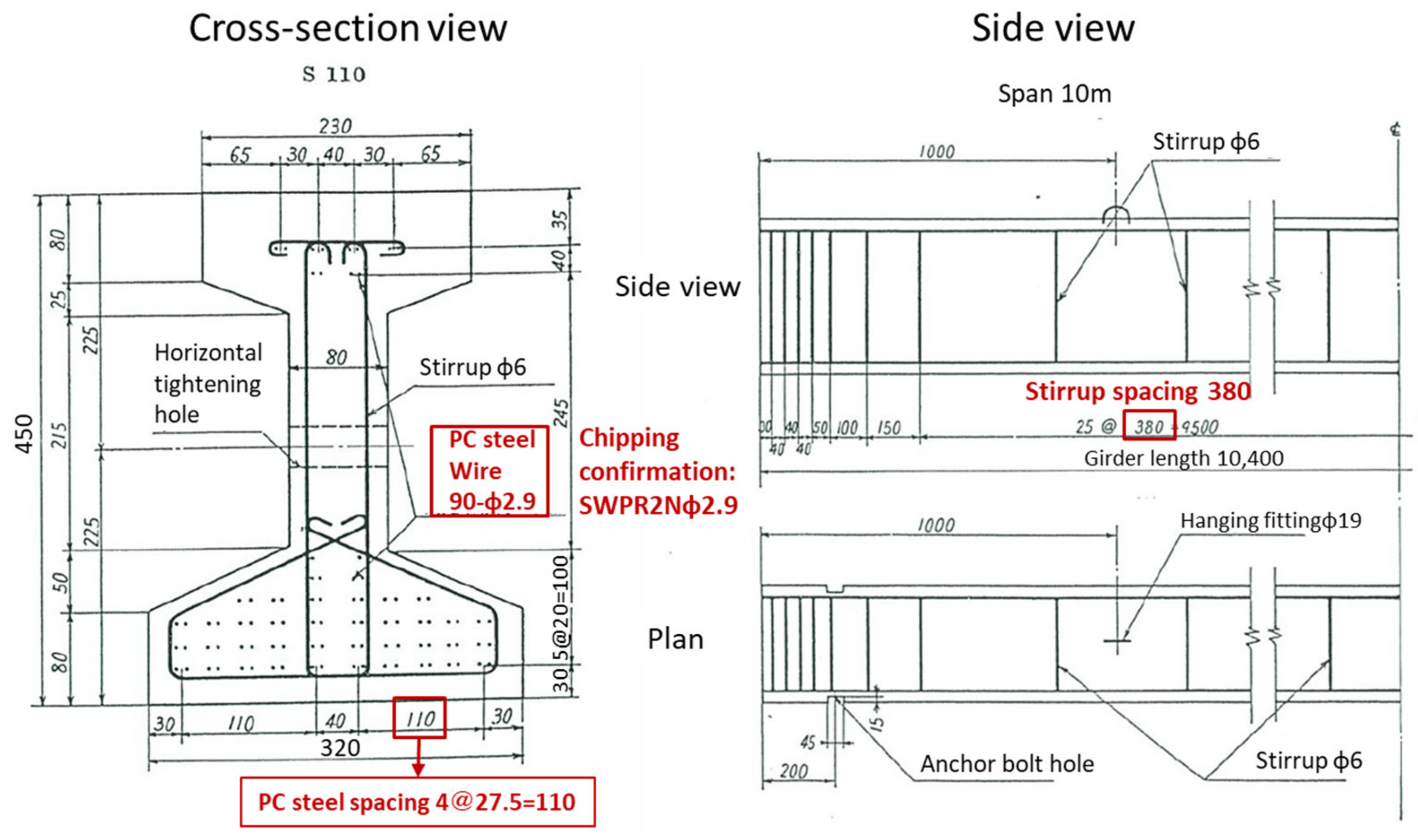
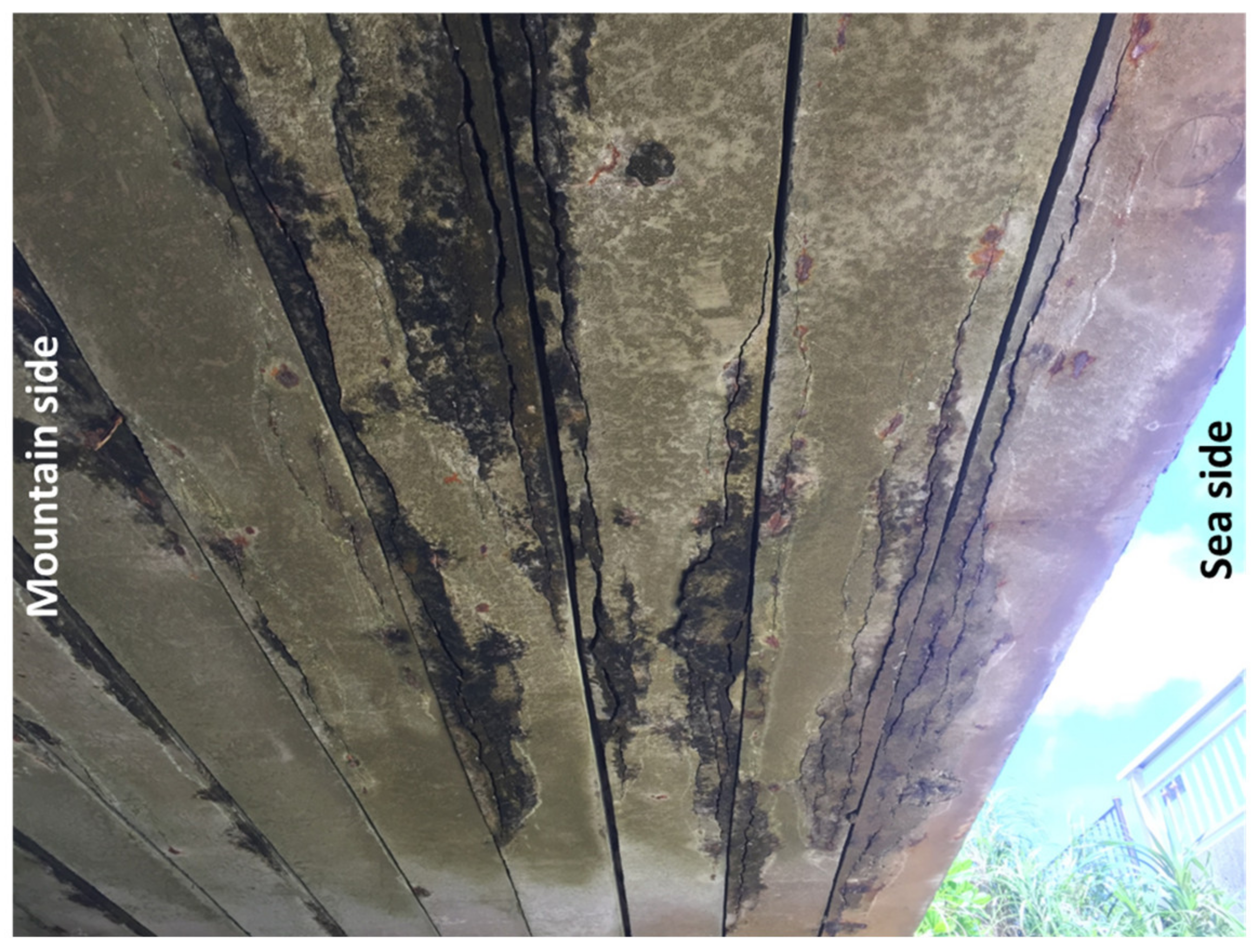

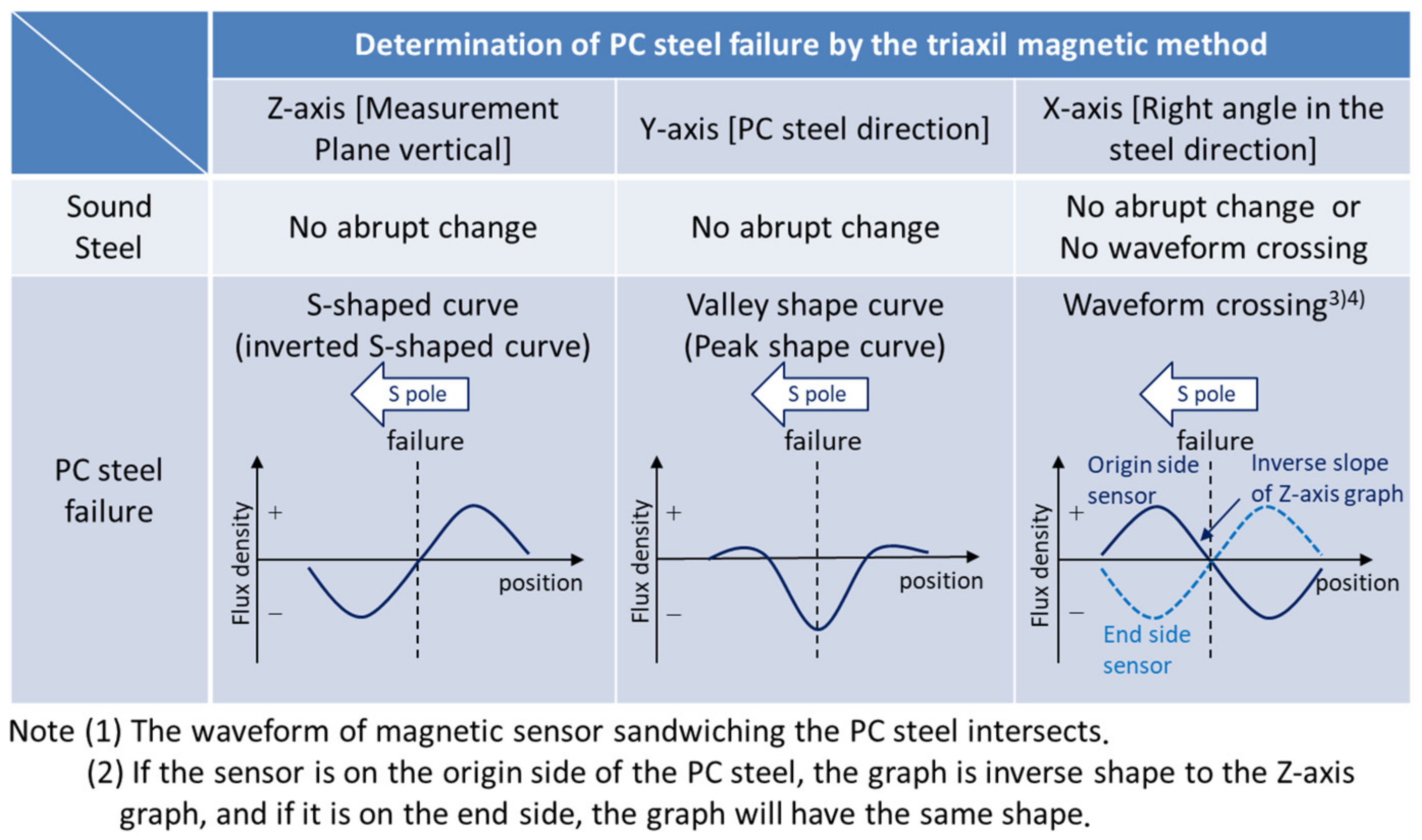
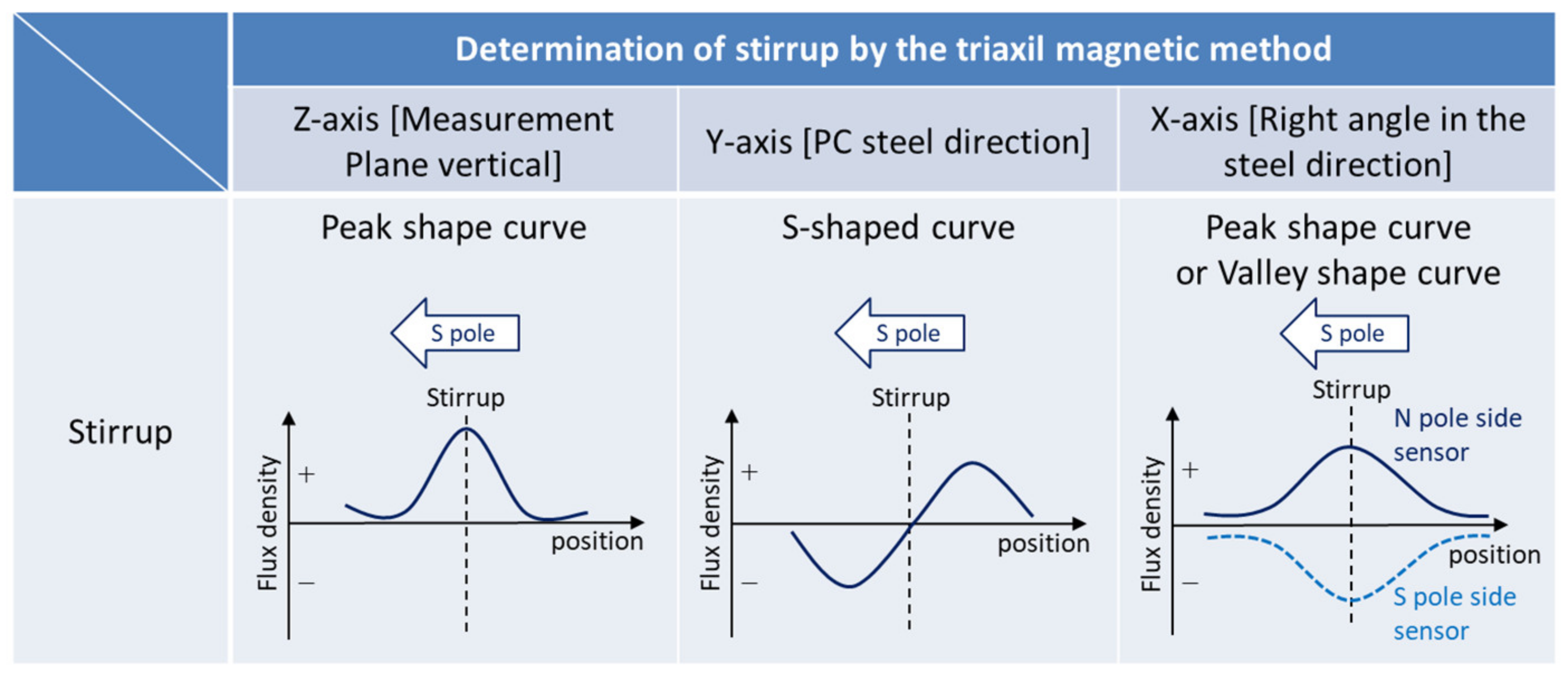

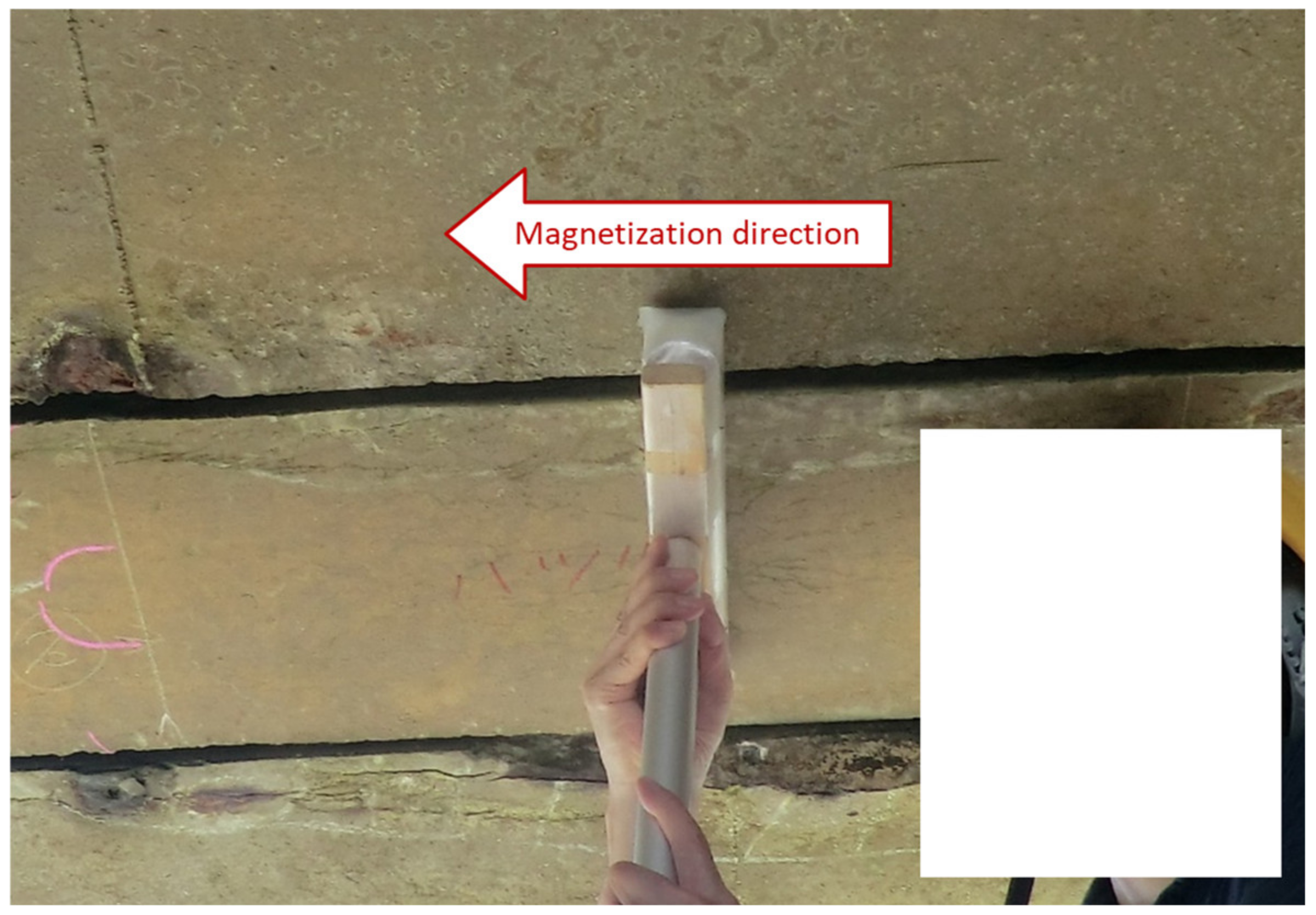
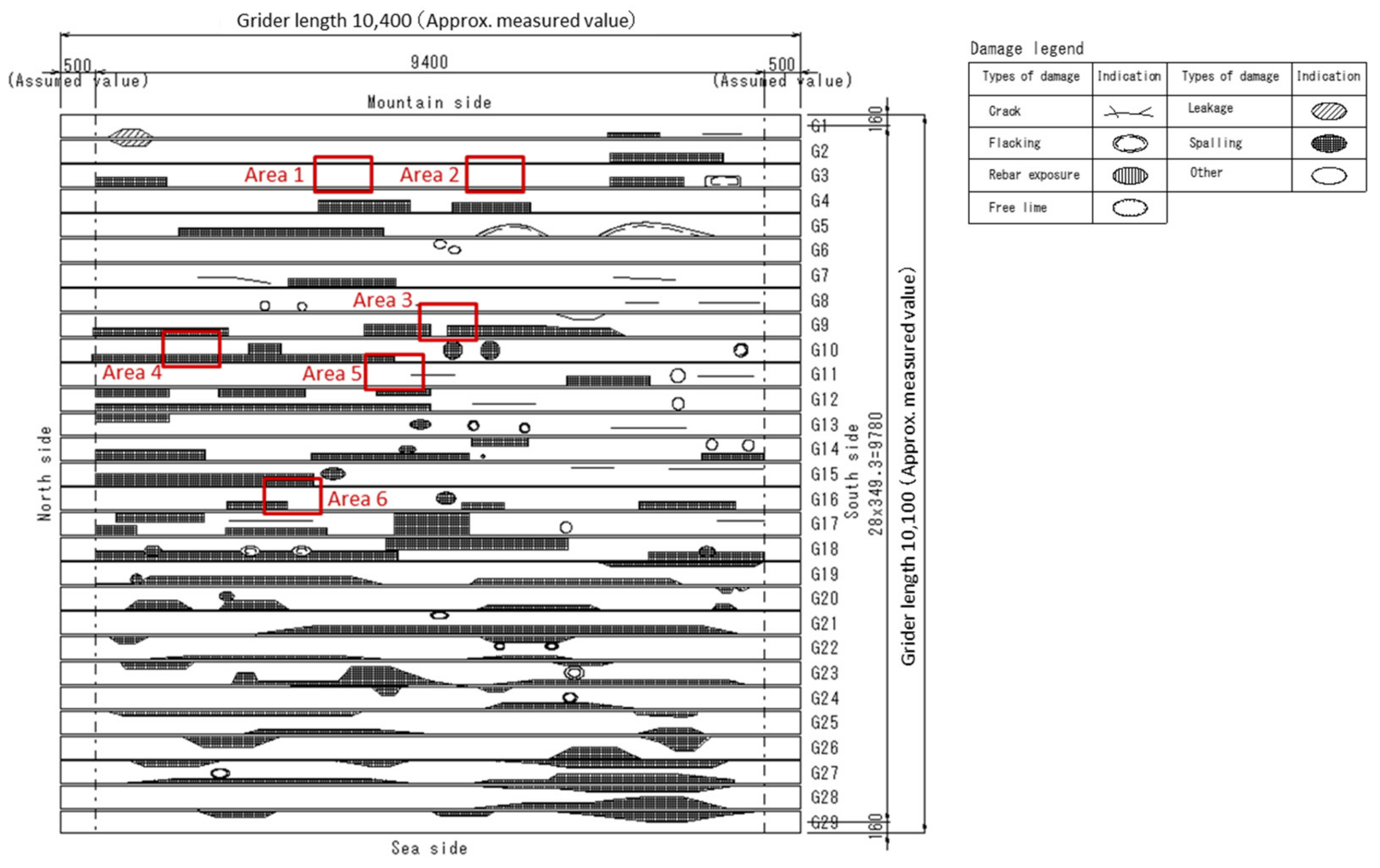
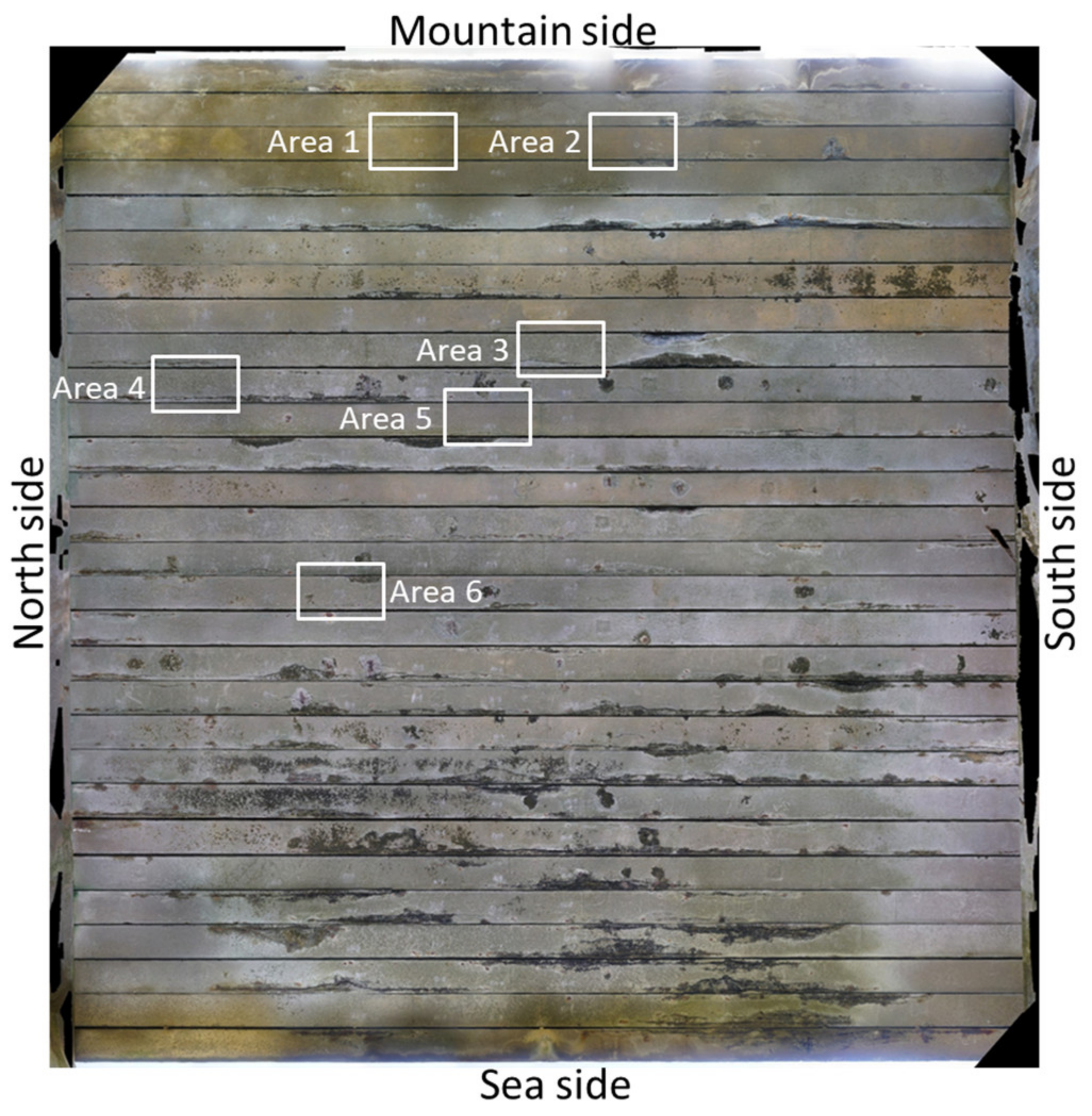
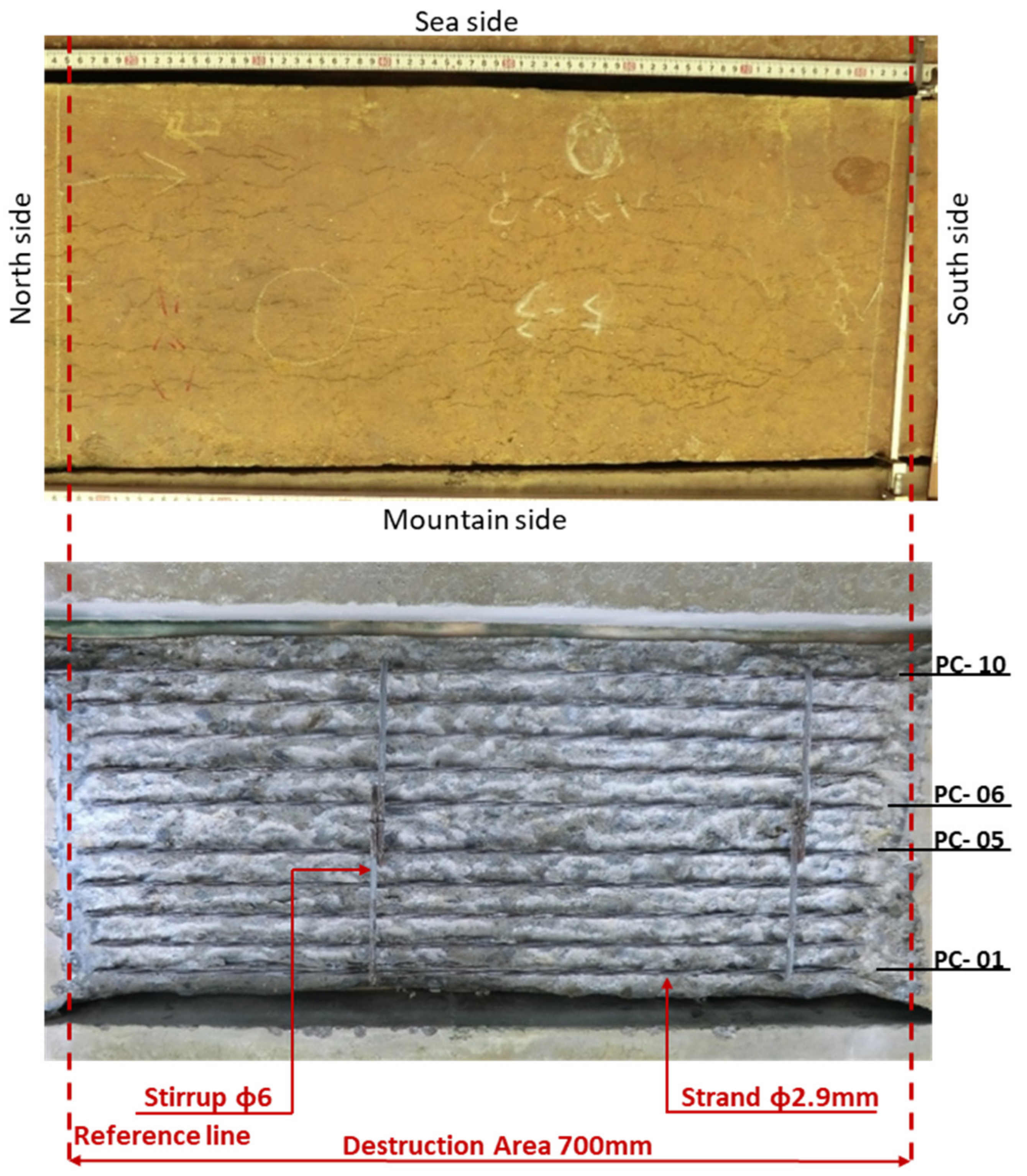

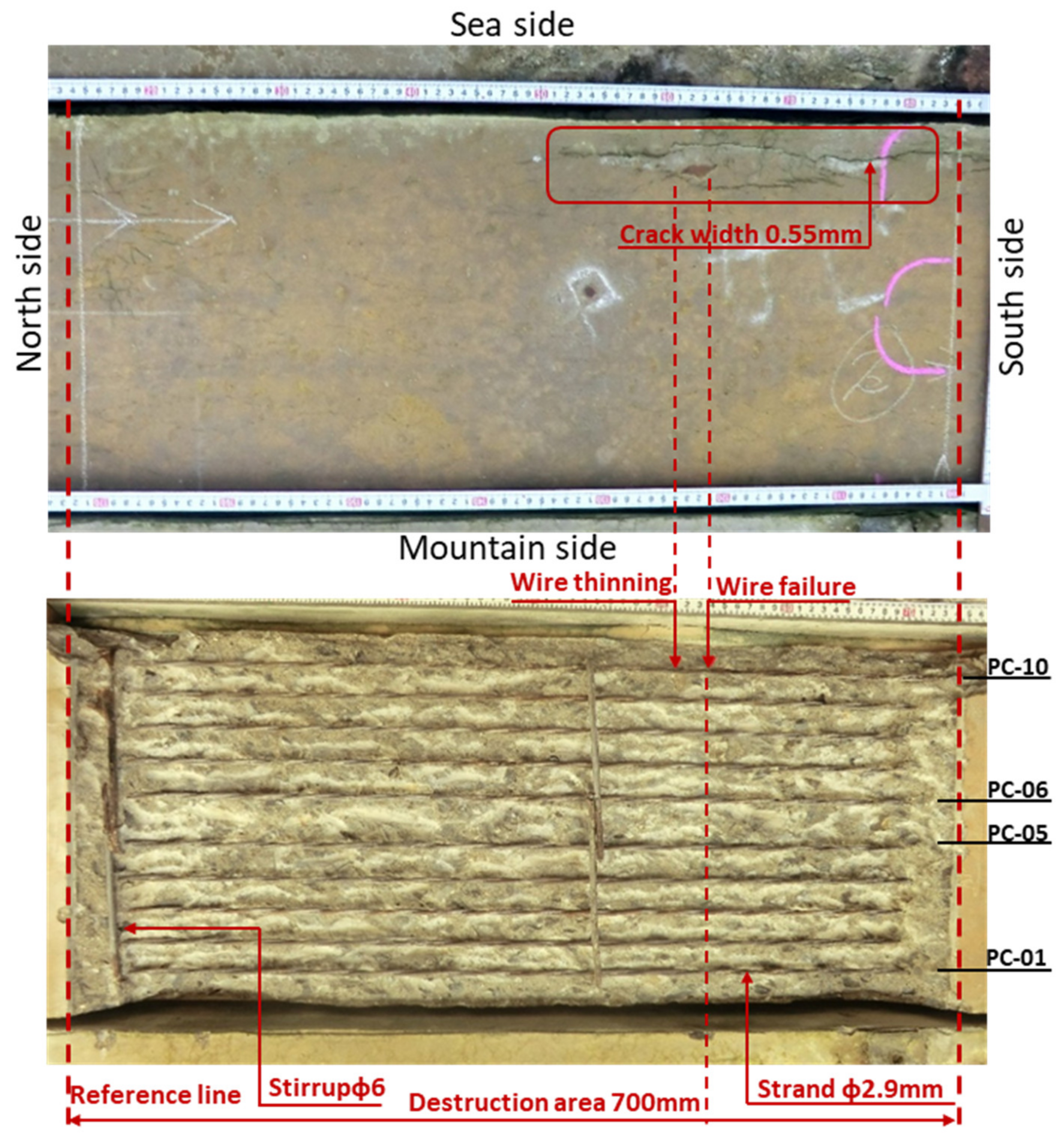
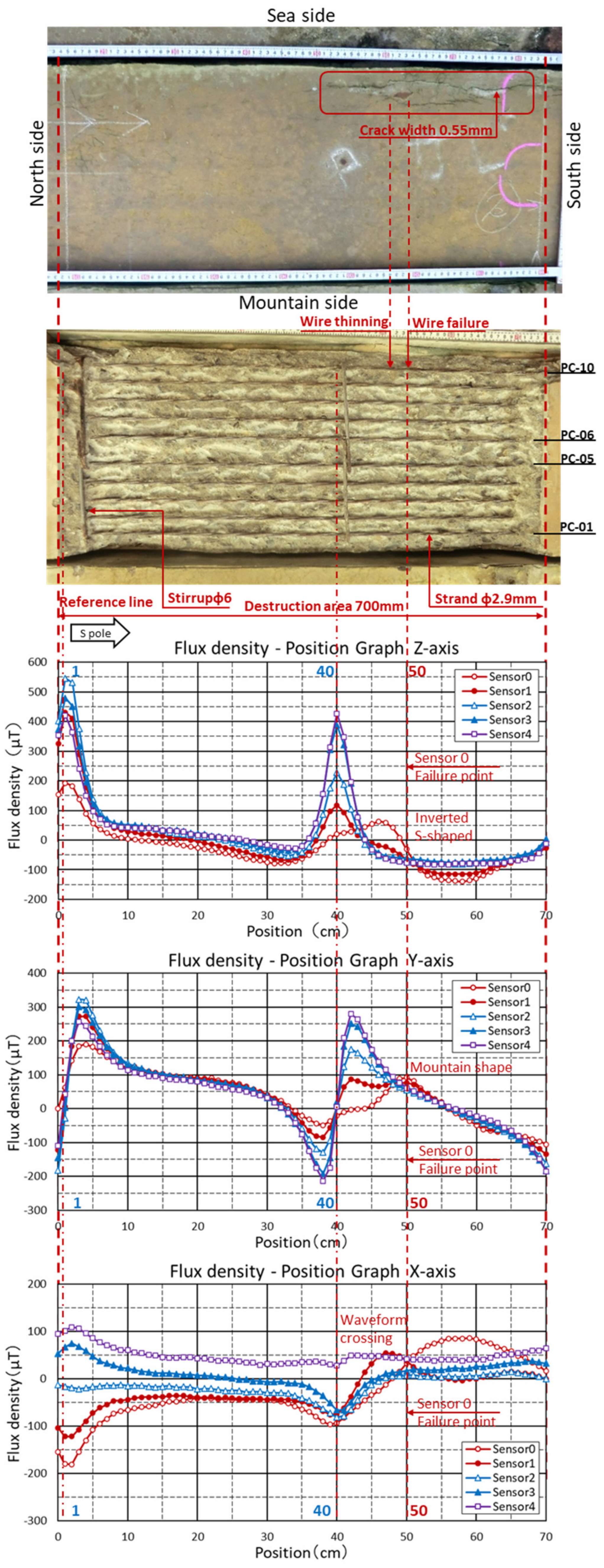

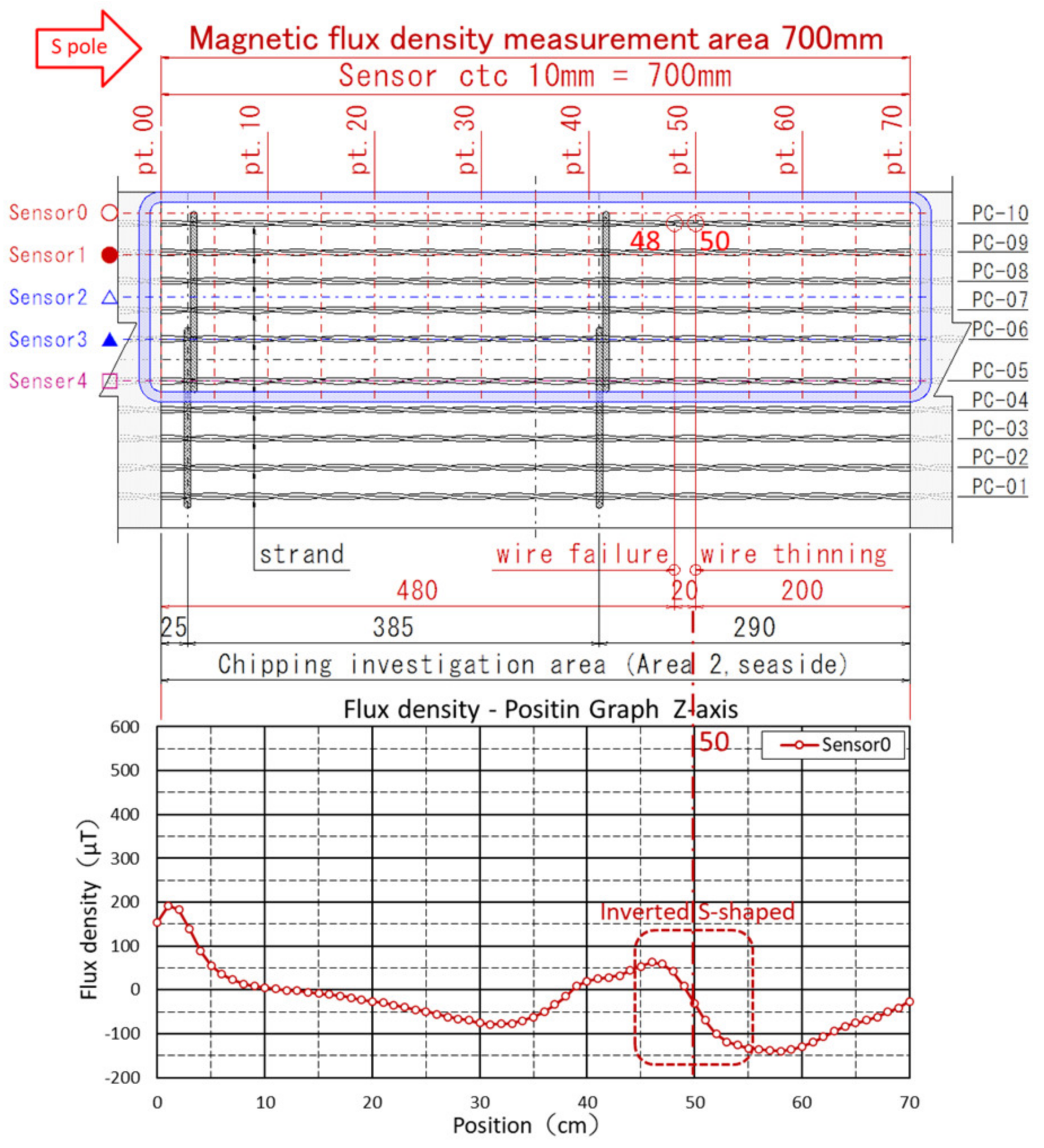
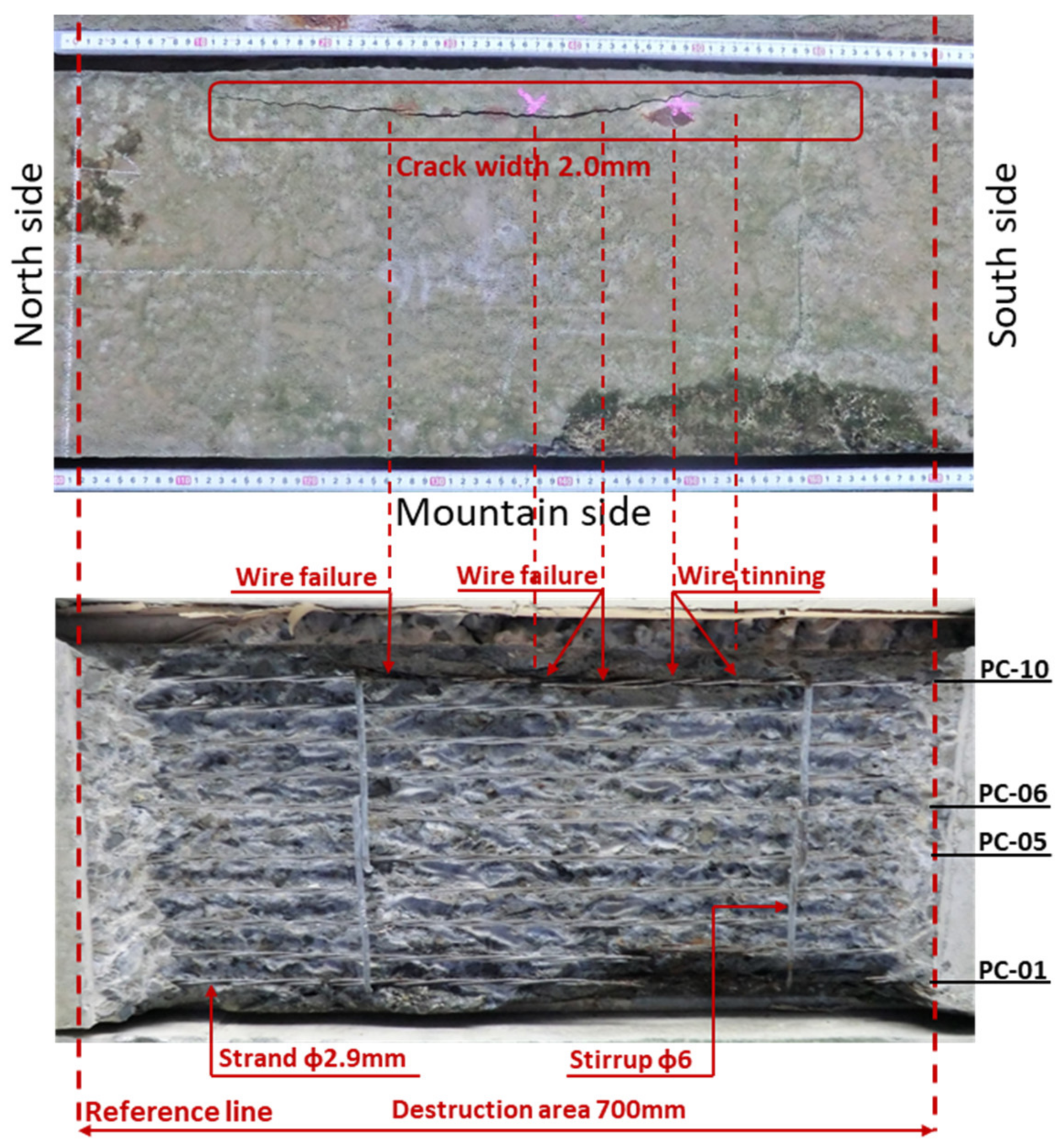

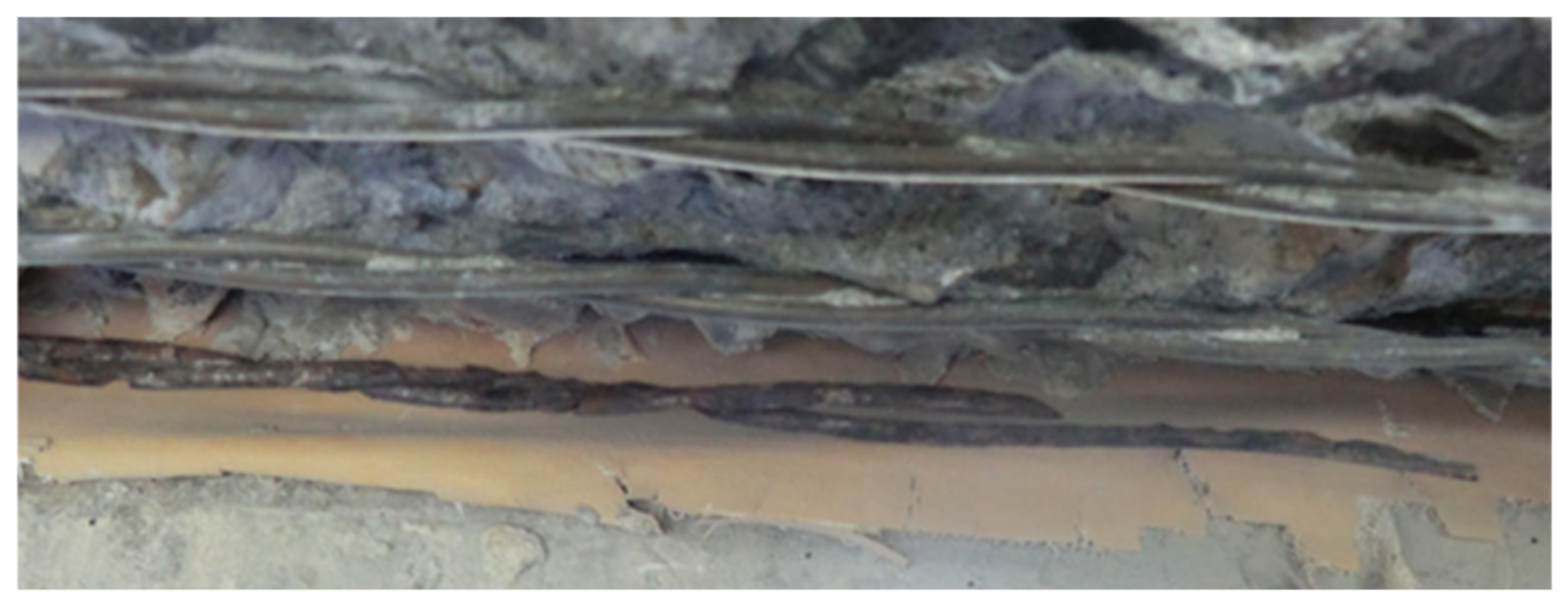
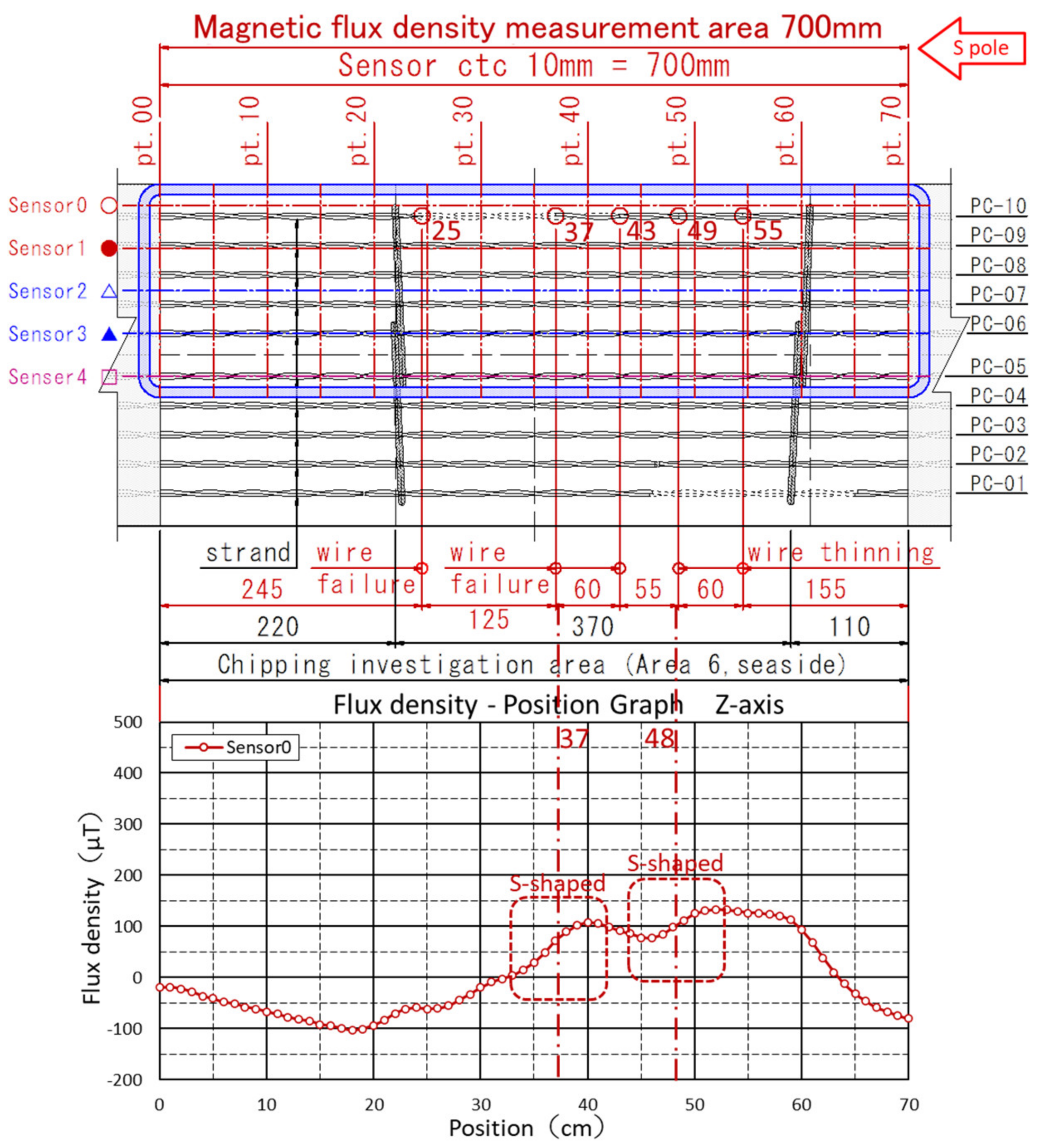
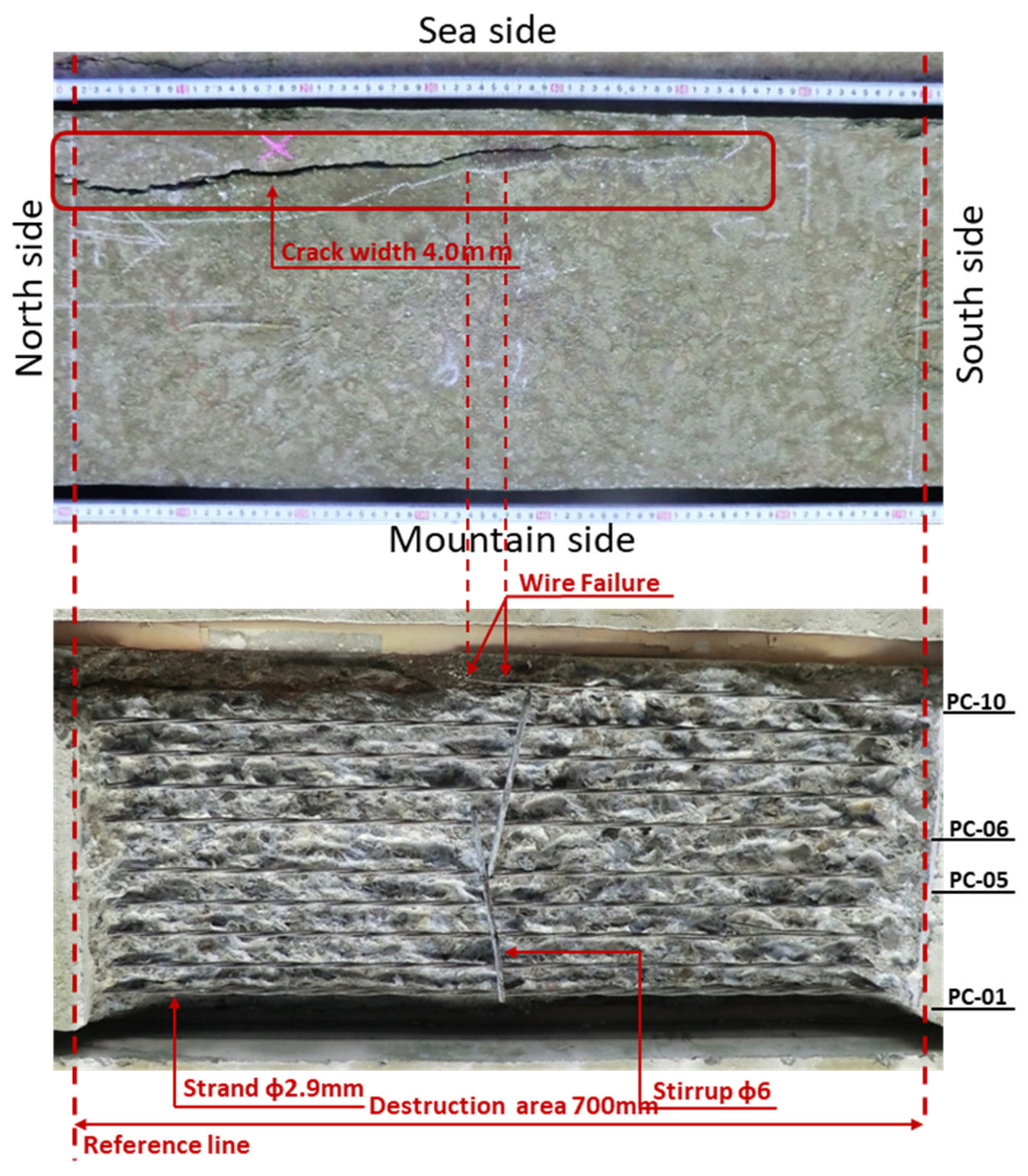

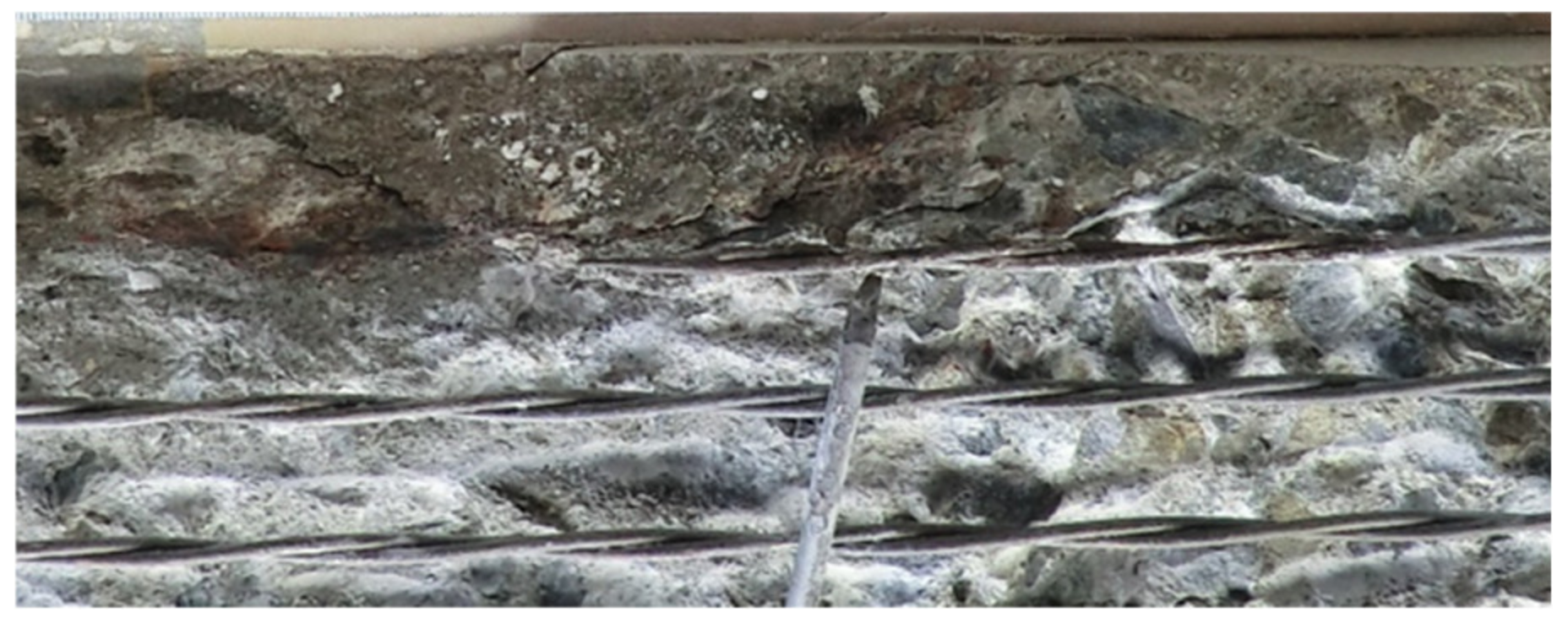
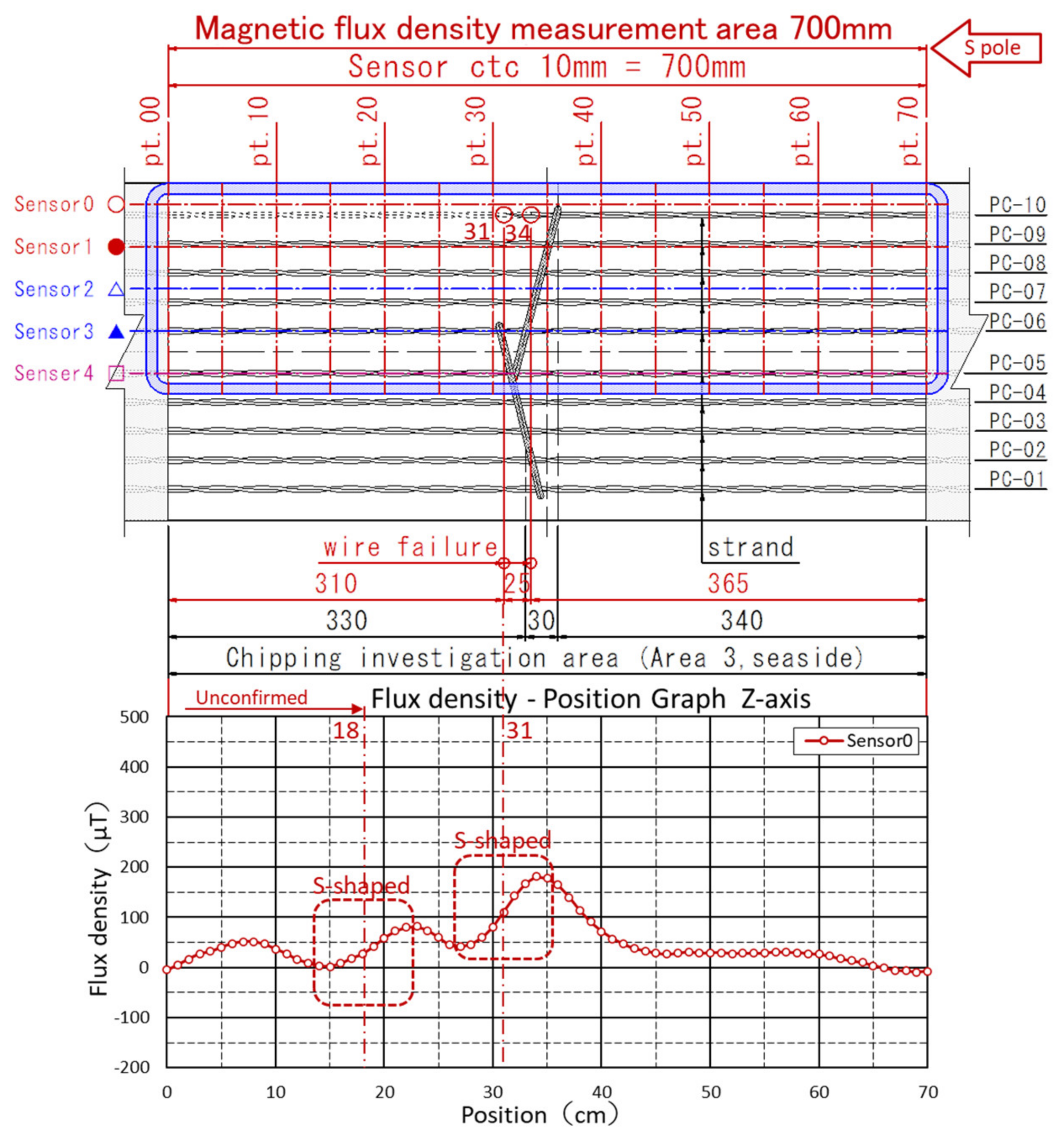
Disclaimer/Publisher’s Note: The statements, opinions and data contained in all publications are solely those of the individual author(s) and contributor(s) and not of MDPI and/or the editor(s). MDPI and/or the editor(s) disclaim responsibility for any injury to people or property resulting from any ideas, methods, instructions or products referred to in the content. |
© 2025 by the authors. Licensee MDPI, Basel, Switzerland. This article is an open access article distributed under the terms and conditions of the Creative Commons Attribution (CC BY) license (https://creativecommons.org/licenses/by/4.0/).
Share and Cite
Kakinohana, H.; Tanabe, Y.; Tamaki, Y.; Shimozato, T. Inspection of PC Pre-Tensioned Girders Deteriorated by Actual Salt Damage via the Triaxial Magnetic Method. CivilEng 2025, 6, 18. https://doi.org/10.3390/civileng6020018
Kakinohana H, Tanabe Y, Tamaki Y, Shimozato T. Inspection of PC Pre-Tensioned Girders Deteriorated by Actual Salt Damage via the Triaxial Magnetic Method. CivilEng. 2025; 6(2):18. https://doi.org/10.3390/civileng6020018
Chicago/Turabian StyleKakinohana, Hisashi, Yuko Tanabe, Yoshiaki Tamaki, and Tetsuhiro Shimozato. 2025. "Inspection of PC Pre-Tensioned Girders Deteriorated by Actual Salt Damage via the Triaxial Magnetic Method" CivilEng 6, no. 2: 18. https://doi.org/10.3390/civileng6020018
APA StyleKakinohana, H., Tanabe, Y., Tamaki, Y., & Shimozato, T. (2025). Inspection of PC Pre-Tensioned Girders Deteriorated by Actual Salt Damage via the Triaxial Magnetic Method. CivilEng, 6(2), 18. https://doi.org/10.3390/civileng6020018





